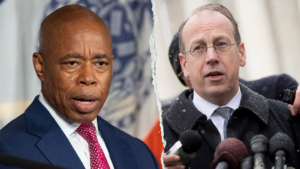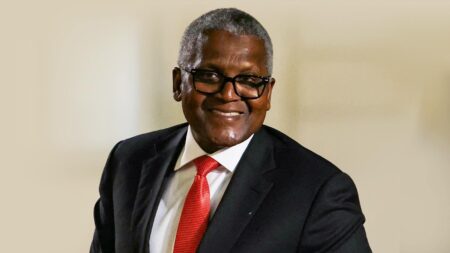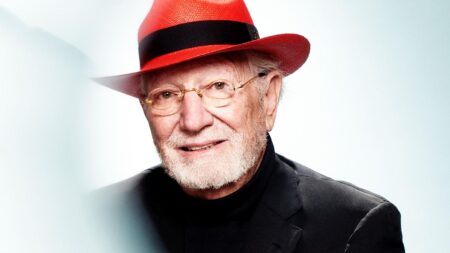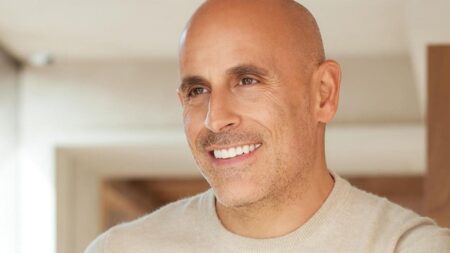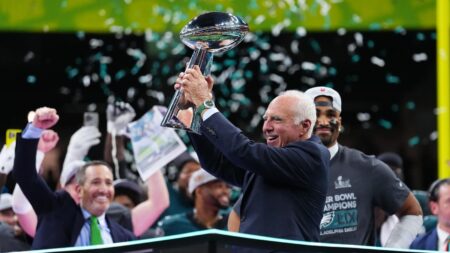A handful of immigrant billionaires got their start in the U.S. with the help of a visa designed to lure highly skilled talent. Now, some of the nation’s biggest, billionaire-backed tech firms are the most prolific users of these H-1B visas.
By Julie Goldenberg, Contributor
Jeff Skoll, the Canadian engineer who was eBay’s first full-time hire and its first president, thought his future in the U.S. was secure back in the late 1990s. After having spent three years at the helm of the fledgling e-commerce company – creating its business plan, overseeing it as it grew to 3,000 employees before going public in 1998 – he was baffled when his request in 1999 to renew his H-1B visa, which allows skilled foreigners to work legally in the U.S., was rejected.
“The H-1B was essential for me,” Skoll tells Forbes. “Otherwise, I would’ve had to leave the country, and I can’t say if eBay would’ve survived [those] early years.” Financially, Skoll would have been fine, though. A year after eBay’s IPO, he became a billionaire thanks to his stock ownership.
Determined to keep his job at eBay, Skoll turned to then-Senator Dianne Feinstein of California and then-Vice President Al Gore for assistance, thanks to an introduction made by Steve Westly, a well-connected executive and Democratic donor at eBay. With Feinstein’s help, Skoll successfully petitioned for a different kind of visa called an O-1– for immigrants of “extraordinary ability” in business and other fields – before later obtaining his green card and eventually, his U.S. citizenship in 2007. Says Skoll now, “It’s not about avoiding hiring Americans. There just aren’t enough Americans to fill the needs of these companies.”
That’s why so many of America’s best known and most dynamic tech companies are among the top employers for folks on H-1B visas. That includes Jeff Bezos’ Amazon, Bill Gates’ Microsoft, Mark Zuckerberg’s Meta and Larry Page’s Google, according to U.S. Citizenship and Immigration Services, an arm of the Department of Homeland Security. (See table).
“It’s more than an immigration policy,” biotech billionaire and LA Times owner Patrick Soon-Shiong recently told Forbes. The South African immigrant came to Los Angeles as a surgical resident in 1980 and says that such visas are “living proof of the American dream in action.”
Elon Musk, the nation’s most famous immigrant these days, is another huge fan of H-1B and his electric vehicle company, Tesla, is now among the top 25 U.S. employers using such visas, the first time it appears in the ranks. (For first time visas, it ranked at number 16). “The reason I’m in America along with so many critical people who built SpaceX, Tesla and hundreds of other companies that made America strong is because of H-1B,” Musk said on X in December.
Created in 1990, the H-1B visa was designed to spur immigration of talented workers like scientists, engineers and educators. The temporary visa, which lasts up to three years and can be renewed, quickly became a popular hiring tool in Silicon Valley. For years, the number of visas awarded annually–via a lottery system–varied, ranging from 48,600 new visas issued in 1992 to 163,600 in 2001. Since 2006, the cap has been fixed at 85,000 annually–20,000 of which are reserved for foreign workers who obtain a master’s degree or doctorate from a U.S. university.
By Forbes’ count, roughly 12% of American billionaires are immigrants, but of those only a handful benefited personally from an H-1B visa early in their career here. Here are a few:
Jeff Skoll
Birth country: Canada
Net worth: $5.2 billion
After studying electrical engineering at the University of Toronto, Skoll went to Stanford University’s business school to get an MBA. While there, he met eBay founder Pierre Omidyar, who hired Skoll in 1995 as president of the startup. Skoll began working at eBay on a J-1 student visa for 18 months before landing an H-1B visa. He’s still a fan of the visas. “American schools just don’t graduate enough folks to fill the demands for these positions,” he says, referring to jobs in tech, healthcare and science in particular. “The H-1B visa is an essential way to bring in skilled workers to make up for the gaps.”
Eric Yuan
Birth country: China
Net worth: $5 billion
The founder and CEO of now-ubiquitous videoconferencing company Zoom faced eight rejections to his visa applications before finally obtaining an H-1B in 1997 to work at web conferencing startup WebEx in Silicon Valley. “I told myself, ‘I’ll do all I can until you tell me that I can never come here anymore,’’ Yuan told Forbes in 2019. He spent 14 years working at WebEx and then Cisco (which acquired WebEx in 2007) before founding San Jose, California-based competitor Zoom, whose popularity soared during the Covid-19 pandemic.
Rajiv Jain
Birth country: India
Net worth: $4.9 billion
Born in India, Jain moved to the U.S. to pursue an MBA at the University of Miami in the early 1990s before obtaining an H-1B visa. Starting in 1994, he spent more than two decades working at Swiss firm Vontobel Asset Management, much of that time in Ft. Lauderdale, Florida, where he rose to co-CEO in 2014. With business partner Tim Carver, he founded asset management firm GQG Partners in 2016. The firm, which went public on the Australian Stock Exchange in 2021, has $153 billion in assets under management. Jain is the chairman and chief investment officer.
Jayshree Ullal
Birth country: United Kingdom
Net worth: $4.7 billion
Born in London, Ullal was raised in New Delhi, India before moving to the U.S. to pursue engineering degrees at San Francisco State University and Santa Clara University. She then did stints at Silicon Valley semiconductor firms Fairchild Semiconductor and Advanced Micro Devices. A representative for Ullal confirmed that she received an H-1B visa, but wouldn’t disclose which job it was for. She joined a startup, Crescendo Communications, in 1992, which Cisco Systems acquired the following year. Ullal spent 15 years rising through the ranks at Cisco. Since 2008, she has been the CEO of computer networking firm Arista Networks.
Thierry Cruanes
Birth country: France
Net worth: $1.1 billion
After earning a computer science Ph.D. in France in 1992, Cruanes kickstarted his career in the U.S. working for Oracle, assisting and eventually leading its optimization team, working to improve the company’s databases. Prior to joining Oracle, Cruanes spent seven years at IBM in Europe. He cofounded cloud-based data storage giant Snowflake in 2012 and oversaw its $3.9 billion public offering – the largest-ever software IPO – in 2020. Cruanes is a named inventor on more than 200 patents. His stake in Snowflake is worth just over $1 billion.
H-1 VISA RECIPIENTS (pre-1990)
Patrick Soon-Shiong
Birth country: South Africa
Net worth: $6 billion
Born to parents who fled China for South Africa during World War II, Shoon-Shiong became the youngest professor of surgery at UCLA in 1983 before inventing blockbuster cancer drug Abraxane. He sold the company behind Abraxane, Abraxis BioScience, to Celgene in 2010 for $2.9 billion in cash and stock. The billionaire doctor later founded NantWorks, where he serves as chairman and CEO. He bought the Los Angeles Times and the San Diego Tribune in 2018 for $500 million. Soon-Shiong calls his H-1 visa, the predecessor to the H-1B, “living proof of the American dream in action,” adding that “while concerns about illegal immigration are valid and complex, it’s important to distinguish those issues from programs like the H-1B visa. When managed well, this initiative empowers talented individuals to drive innovation, strengthen our economy, and enrich America’s diverse fabric for generations to come.”
Raj Sardana
Birth country: India
Net worth: $2 billion
After graduating from Delhi Technological University, Sardana moved to the U.S. in 1981 to obtain his master’s degree in mechanical engineering from Georgia Tech. It was a big break, but by no means easy for Sardana, who says he arrived in Atlanta with “maybe a hundred dollars” in his pocket. “[I] started my life from scratch here,” he says. “I got a job at the cafeteria of Georgia Tech and supported myself through college.” When he graduated, Sardana got an H-1 visa to work at Howmet Aerospace, which built engine parts for Pratt & Whitney. He founded the precursor to his Atlanta-based IT services firm Innova Solutions in 1998.
Read the full article here



